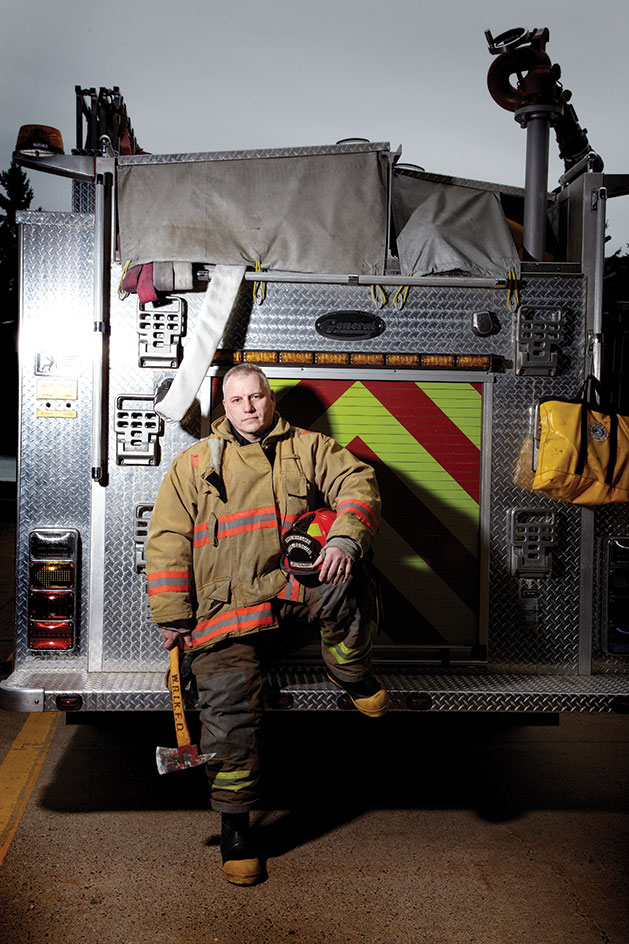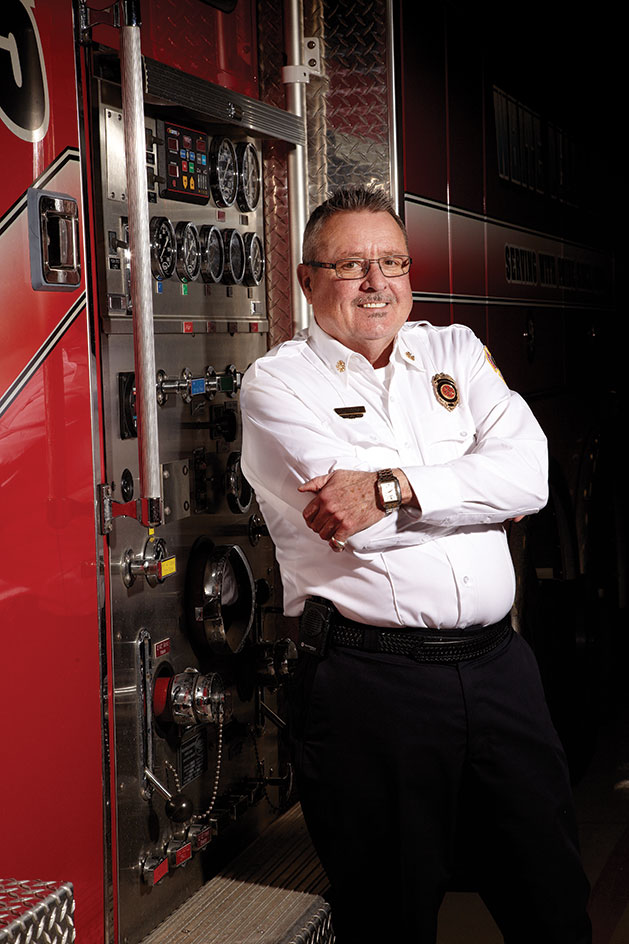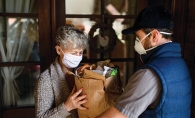White Bear Lake Fire Department
The Department
Celebrating their 125th year, the White Bear Lake Fire Department began out of necessity. A group of approximately 20 men fought fires with horse-drawn pumpers and bucket brigades, says Sara Markoe Hanson, executive director of the White Bear Lake Area Historical Society. “It was pretty rudimentary and the response time, as you can imagine, was awful.”

In 1929, with the community’s help, the department bought a gleaming state-of-the-art American LaFrance fire truck. Carnivals throughout the 1930s helped pay for the remaining debt. “It was a big undertaking for a small department, but they made it work,” says Hanson. ”It was, and is, the pride and joy of the department.”
But the trucks couldn’t run without the firefighters. For the most part, the firefighters were local business owners in town, or their employees, who dropped everything and closed up shop when the tornado siren roared to life. It is said that the local bar owners would appoint someone to watch over the drinks as patrons headed out to fight a fire. They’d return a short while later to find all was well with their libations.
The Man
One of those guys who answered the call was Tim Vadnais. His uncle was the part-time fire chief at the time, and his boss at the family business in town. Vadnais, who considered law enforcement early on, joined the department in 1974; he’s been fire chief since 1988.

When Vadnais was just 20 years old, on his first day as firefighter, the siren sounded and he sprang into action, eager to try his hand at the occupation that was as much a part of his lineage as his eye color. He geared up and headed out to the scene of a motor vehicle accident in Dellwood. They came upon the scene and his heart thumped in his chest like the proverbial kettledrum; the car belonged to a boy from school. One of the occupants made it. The other did not.
“They were my friends,” says Vadnais. “I’ll never forget that day. I’m sure every firefighter, no matter how long they’re around, can tell you their first call. That one was really bad.”
Vadnais has used that experience to guide him as he has created one of the most efficient, effective and technologically savvy departments around. He started by hiring fire marshal Mike Turnbull, who has been responsible for everything from teaching fire prevention to students and seniors to writing grants to buy stove-top extinguishers. To date, these extinguishers are directly responsible for eight “saves.”
The White Bear Lake department was one of the first to use European-style helmets, and has added myriad high-tech firefighting and rescue gear, including infrared cameras to special hoses and nozzles to state-of-the-art CPR machines and top-notch computer systems in the trucks.
Ensuring young recruits have affordable places to live nearby, Vadnais encouraged the city to purchase six properties near the fire station; firefighters pay $50-$200 per month for rent. Additionally, their facilities have become a training ground for firefighters around the state, and the department frequently signs on for pilot projects and studies.
Suzanne Miller, who has been with the department since 1999 and wanted to amp up her medical knowledge, is currently in the community paramedic pilot program at Hennepin Technical College that would put her in the field acting as an extension of a primary care physician; the fire department is paying for her education.
This program is just part of the chief’s visionary philosophy. “If there’s something new, we get it,” he says.
Under Vadnais’ guidance in 2011, 55 paid on-call firefighters and 23 EMS folks answered 420 fire calls, 67 rescue calls (cardiac arrest or car accidents that required extraction) and 2,786 medical calls out of two stations. Through the mid-20th century the department averaged one accidental fire death every year and a half; since then, they haven’t had one in 26 years.
Mahtomedi Fire Department
The Department
The Mahtomedi Fire Department has its roots in the Willernie Fire Department, which, according to retired Mahtomedi firefighter Richard Freeman, was formed back in 1917 by his grandfather. The group eventually purchased a “soda and acid” fire truck that extinguished fires by creating a chemical reaction with water, bicarbonate of soda and adding small amounts of sulfuric acid.
Their first ambulance was a converted grocery panel truck. “The jumpseat was an old beer case,” says Freeman with a laugh.

The Mahtomedi Fire department was located for a time in the town garage, which was in the back of the community clubhouse located at Hickory and Mahtomedi Avenue, says Sara Markoe Hanson. “The clubhouse/town hall was completed in 1930 or so, and the fire department was in the garage for a while.”
From about the mid-1950s, the Wildwood Lions Club was responsible for everything from purchasing ambulances to actually running the department until the city took over in 1995.
In 1972, the departments merged.
The Man
With his dad, uncles and cousins on the Lake Johanna Fire Department, Terry Fischer thought that would be where he would start his firefighting career. He also thought he’d be fine if he didn’t get EMT training. But fate had other plans. He started in North St. Paul and joined the Mahtomedi Fire Department in 1993.
His very first call was a cardiac arrest; the guy with reservations about medical rescue was face-to-face with it. So there was medic school in 1996, paid for by the Wildwood Lions Club, and after 16 years on the department, Fischer became the city’s first full-time fire chief in 2009.
Like Vadnais in White Bear, Fischer wanted to keep his 35 paid on-call firefighters and EMS folks updated with the most technologically advanced equipment. With the ongoing help from the generous Wildwood Lions Club, he’s succeeded.
With that money, they were the first department in the Twin Cities to outfit their two ambulances with EZ Lift stretchers, saving backs and dollars at the same time, and they purchased Stair Chairs, which allow firefighters and rescue personnel to bring patients down staircases easily. There are new computers that save time in the field and keep hospitals abreast of patients being transported, and their ambulances are on a 10-year rotation. Numerous medics have had their schooling paid for thanks to the money brought in by the Lions Club, and because the department now has all up-to-date equipment, they’re aiming for a medic scholarship fund in the future. “This department wouldn’t be what it is today without the Lions’ support,” says Fischer.

As chief, Fischer was instrumental in helping certify the department so they can run their own ambulances, and to keep his firefighters up to speed, every Monday evening they all report for three hours of training. Last year, his firefighters answered 845 calls; 630 of them were medicals.
Mahtomedi Fire Relief organizes ham and turkey bingos in the spring and fall, and every Halloween approximately 300 kids come in through the large double doors to get some freshly-made cotton candy.
“It’s in my blood,” says Fischer of the job that has been his life’s work for most of his adult life. “I love to come to work everyday.”









